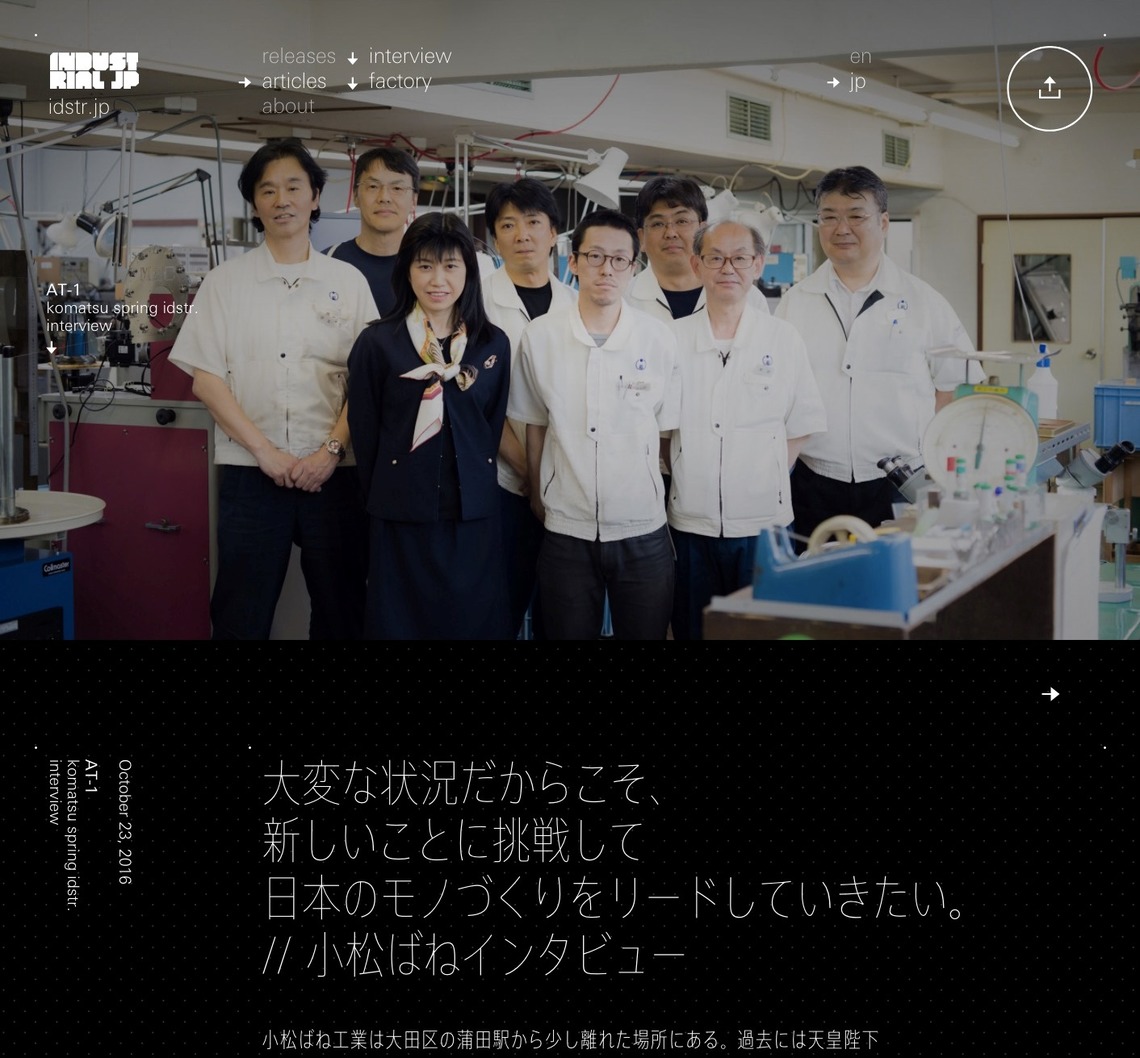Note: This website was automatically translated, so some terms or nuances may not be completely accurate.
"INDUSTRIAL JP": Discovering Small Factory Craftsmanship Like Checking Out New Music Releases

Shimohama Rintaro

Toshihide Kimura
Dentsu Inc.
INDUSTRIAL JP is a project that samples machine sounds recorded in small factory production sites, has musicians create original tracks using these samples, and mixes them with footage of the same manufacturing processes to release as music videos.
This pioneering "small factory music label" initiative not only drew intense interest from factory enthusiasts, music fans, and the manufacturing industry, but also won a Bronze Lion in the Design category at Cannes Lions 2017 and the Grand Prix at the 2017 ADC Awards. Why turn a small factory into a label? Where is this movement headed?
We uncovered the full story through interviews with graphic designer Rintaro Shimohama and DJ MOODMAN (Toshihide Kimura), Creative Director (CD) at Dentsu Inc. 2CRP Bureau, who handled sound direction for this project.

The challenge: Creating a business model to rebrand small factories
──INDUSTRIAL JP seems like a project that doesn't immediately appear to be advertising. How did it begin?
Kimura: The site launched in the fall of 2016. I think the staffing solidified and we started moving forward around spring 2016. The team gradually grew to include CD Hidetoshi Kurashiro from DENTSU SOKEN INC. Team B, Masato Otsubo, President of Yuki Precision, Yuki Shintani fromDentsu DigitalInc., and Producer Masashi Fujioka from Dentsu Creative X.
Shimohama: I was approached by Mr. Kurashiro through the "Stray Character Discovery Project," but fundamentally, these small town factories didn't have much budget, and we had absolutely no idea what we could do or what was even possible. We started moving forward knowing only that we wanted to somehow help small and medium-sized manufacturers.
Kimura: The challenge was creating content that could lead to rebranding these small factories. Most Japanese people never get the chance to learn about the work done by these factories that actually support Japan's industry. It started as a project to revitalize that very aspect.
Shimohama: Even before I got involved, Creative Director Kurashige and President Otsubo of Yuki Precision had apparently been discussing for a while, "Can't we use creative power to help Japan's small factories and SMEs?"
Kimura: With that foundation in place, the baton was passed to Shimohama-kun, who thinks in terms of output, and the project kicked off. The catalyst was the video he unearthed about Komatsu Spring Industry. That was a serendipitous discovery, right?
Shimohama: While visiting a manufacturing trade fair as part of my research, I saw a small monitor at the Komatsu Spring Industries booth playing footage shot by an employee with a home video camera.
Watching that footage was a shock. "This is how springs are made...!?" It started with a wide shot of the entire machine, then zoomed in with a power zoom, whoosh, to the details. The movement was clumsy, but that made it cool in its own way.
Kimura: It was this purity, this relentless focus on capturing only the core technology.
Shimohama: Exactly. It wasn't about trying to create any kind of spectacle. So I asked to film the monitor with my phone, took it home, added existing music, and edited it. That's when I realized we could use the same approach for other factories. And since we were handling music, we decided to consult Kimura-san, who DJs as MOODMAN.
Kimura: The proposal came to me via DENTSU SOKEN INC. Team B. I saw the demo, and even then, I felt the core of the content was already there. That said, the "industry × music" combination isn't an entirely new approach. It's just not usually this straightforward.
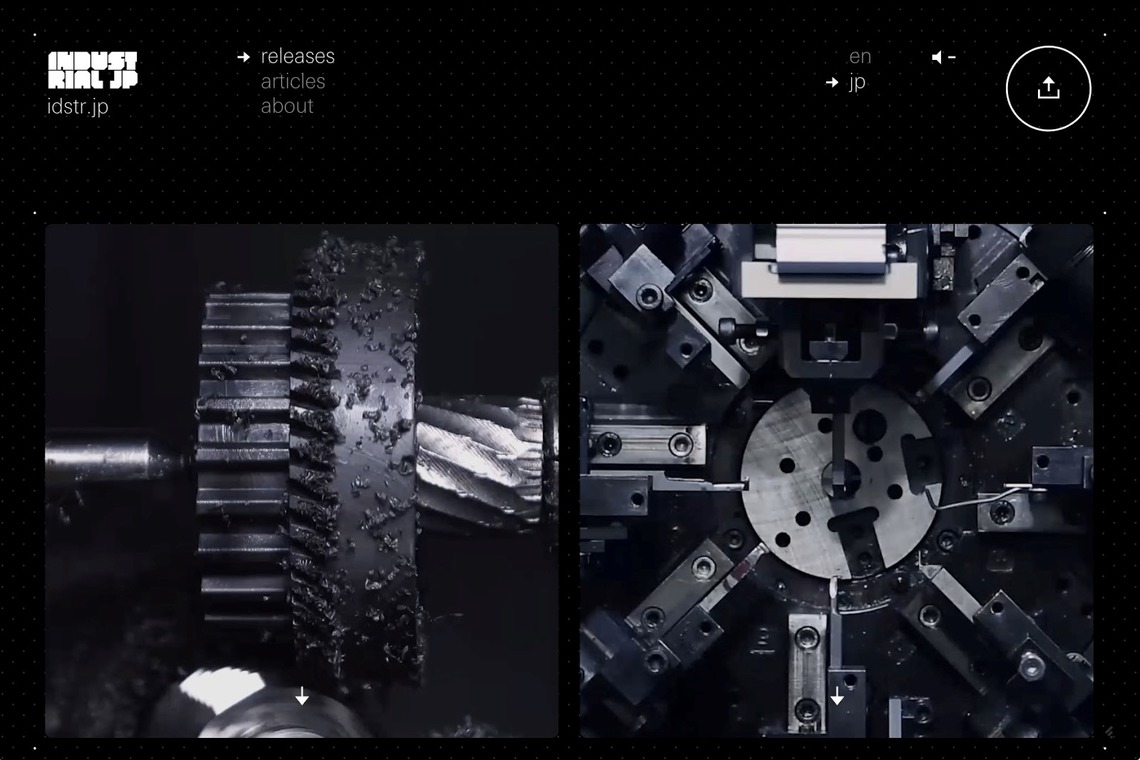
Shimohama: It's so cliché that maybe nobody even tried to do it...
Kimura: Take Francis Ford Coppola's "Koyaanisqatsi," for example. There are already several classics based on the concept of technology × minimal music. So if we're doing it now, we should update the communication framework.
Also, I thought continuity was important, not just one-off content. That's why I proposed the idea of making it a music label platform, along with the label name, and collaborations with themusic download siteOTOTOY and the streaming program DOMMUNE. By making it a label, I hoped it would create even a few more points of contact with people who love music and culture...
I thought it would be great if people could learn about the factory's current state in the same way they check out new music releases. Especially for younger audiences and international audiences, who are often considered to have fewer touchpoints.
──The pairing of factories and musicians is brilliant, isn't it? Each work has its own distinct world.
Kimura: For example, Komatsu Bane's manufacturing machinery moves with a spring-like bounce, so we thought of asking DJ TASAKA, who creates funky techno. Shin-Ei Press's sound is characterized by heavy beats, so we chose GONNO, who can create crisp techno while also linking to the recent dark European aesthetic.
For Asai Screw, we thought it'd be interesting to clash the factory owner's urban vibe with DORIAN's style (laughs). Beyond that, we've also commissioned artists like CHERRYBOY FUNCTION, SOUNTRIVE, and INNER SCIENCE. Even within the techno genre, we've deliberately dispersed their styles, fields, and age groups while maintaining a clear direction.
I believe it's become a label with an interesting lineup that even international music fans can appreciate, showcasing the current subtlety of Japanese sound production.
Shimohama: Many music labels are small businesses, after all.
Kimura: That's true for many independent labels. Responding to how music consumption has drastically changed over the past decade or so, music labels, like small factories, are all struggling. On one hand, I hope INDUSTRIAL JP's efforts as a music label can provide some kind of stimulus.
I apologize for sounding grandiose, but emotionally, it feels like we're working on rebranding both small factories and music labels in parallel (laughs).
Shimohama: We split the video editing duties with Mr. Ryosuke Sone from Dentsu Inc. Creative X. Since each factory has its own unique strengths, we directed the footage together, discussing how to bring out their distinct charms.
As for the filming, it felt less like shooting a music video and more like capturing product shots or sizzle cuts. Like, "This machine oil is seriously sizzling, huh?!"
Rather than chasing viral buzz, we wanted to purely showcase the intricate technology and its sheer coolness.
──How did you select the small factories?
Shimohama: I found the factories by visiting industrial fairs and getting introductions through company presidents. I'd look at the products displayed at their booths or watch demo videos, then ask, "How do you make this?" When they explained something like, "We rotate a metal rod while applying a blade...," I'd visualize the manufacturing process. The moment I handed them my Dentsu Inc. business card, they'd look at me suspiciously, wondering, "Why is someone from Dentsu Inc. doing this?" (laughs).

Kimura: Shimohama-kun handled the initial contact with the factories, but getting started with them was quite difficult.
Shimohama: Since explaining it verbally wouldn't get the point across, we first just visited for a factory tour... We were allowed to film only the areas where photography was permitted using our smartphones, and later showed them a demo video edited from that footage.
Kimura: The skills honed at Noramojii are being put to perfect use here. It comes down to whether we can convey that passion—the desire to shoot something cool, to create something interesting. While the core concept is rebranding, it doesn't resonate if it stays purely conceptual. It's only once things start taking shape that the conversation becomes easier.
Shimohama: Well... basically, it's cold calling, isn't it...
──How did the factory people who came for the interview feel about it?
Kimura: I handle field recording on-site. First, I wander around the factory with directional microphones, recording the sounds of the machinery from various angles.
When I play the recorded sounds for factory workers, the typical reaction is, "What's so interesting about this?" (laughs). They'll say things like, "This sound indicates a machine malfunction." I learned that even the smallest details of sound embody solid technical expertise.
Shimohama: They actually judge whether processing is done correctly by sound. If a "clang clang" becomes a "thump thump," they know something's wrong and stop it.
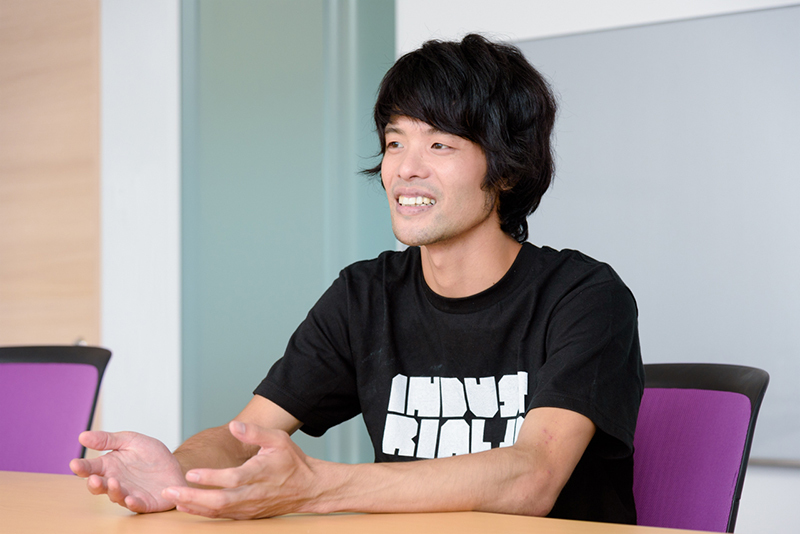
──That's where the internationally acclaimed master craftsmanship comes in.
Shimohama: While the parts we make are things like springs and screws, we receive orders requiring precision down to 0.01 millimeters. To meet these demands, the craftsmen meticulously adjust the machinery and even build their own specialized tools.
That's where the craftsmanship truly shines. We interviewed factory workers and compiled their stories on our website. It really shows how much ingenuity goes into making what might seem like ordinary products.
Kimura: I realized designers and musicians are the same. The whole is built from the sum of its parts.
Shimohama: For the INDUSTRIAL JP website, we asked Masanori Sakamoto and Ken Murayama of DELTRO—who also designed the initial UI for Dentsu Inc.—to handle the art direction, design, and implementation. It's crafted to look beautiful on any device, whether desktop or smartphone.
It might not immediately strike you as impressive, but it's precisely the result of meticulous production work. It's a seemingly simple site, but it's underpinned by incredibly sophisticated technology. It's just like a small factory... Cool, right?
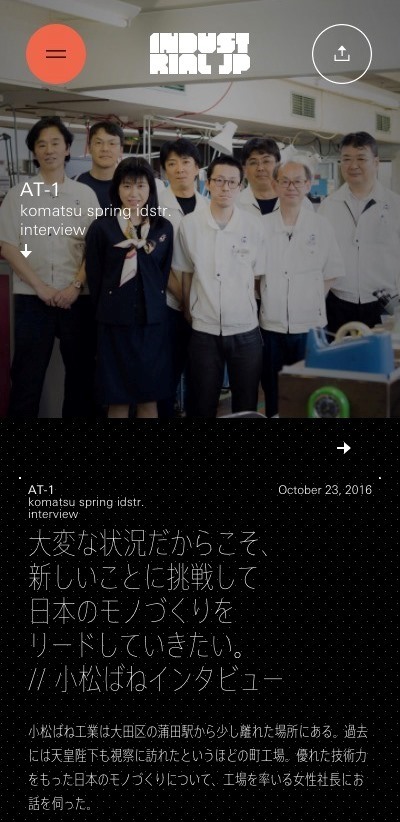
Kimura: We focus on the meticulous and beautiful things happening in a matter-of-fact way. This project is essentially an exercise in extracting the details. Whether it's music production or design, the essence of the work isn't about novelty or going viral. It's the accumulation of details that forms a large, moving entity. That's what I believed in and worked toward.
The world's factory enthusiasts and music lovers who latched onto it first
──You also have a music video that racked up over 300,000 views on YouTube. What was the reaction and response like?
Kimura: Looking at the YouTube comments, most are from foreign viewers. I can't read them at all (laughs), but apparently there's a lot of Russian. We add explanations using YouTube's subtitle feature for each video, but it would be interesting if we could make these explanations multilingual.
Shimohama: The comments saying "Awesome!" or "Cool!" seem to come more from factory enthusiasts than music fans.
Kimura: Eastern Europe, Russia, and media in the US and Europe mainly feature industrial technology and design. On the music side, it's often tied to specific artists and introduced as release information.
It's also significant that each artist has established credibility and a track record overseas. Since techno music itself is a global form of expression, I think it naturally becomes accessible to people in any region.

Shimohama: In Japan, the industry-specific newspaper for the screw and spring industry, "Metal Industry News," has interviewed us several times.
Kimura: I'm always amazed by the perspective of these trade publications' interviews. Thinking about it, I believe it was significant that we resonated with factory enthusiasts and tech geeks hidden across various industries. The same goes for the culture magazine folks. The SAIZO team, the Playboy team—basically, everyone was fundamentally fond of factories (laughs).
Shimohama: Conversely, it was after winning the ADC Grand Prix that we started getting featured in media within the context of so-called "advertising creative."
──The ADC award was in the newly established On-Screen Media category, right? It's a category for art direction in web and video. What do you think they valued?
Shimohama: I think one reason was that the work had a nice analog feel.
Kimura: As is often discussed in media art, works dealing with technology inevitably become outdated after a few years—it's their fate. And lately, that cycle has accelerated. That's why this project didn't do anything particularly new. We did ordinary things. It's what you might call "lateral thinking with matured technology."
Shimohama: The music video doesn't use particularly new techniques or involve huge budgets for spectacular filming. The website doesn't employ cutting-edge programming technology or feature super-novel expressions either.
However, every single element—the typography and fonts used for the displayed information, the way the factory loop images are presented, and so on—features meticulously designed details by DELTRO. I believe it was the thorough art direction applied to every single part that earned high praise. Of course, the music itself was also highly acclaimed.

Kimura: Last year, I served as a judge for the Music category at Cannes Lions, and I felt there was a greater focus on sound design in communication than before.
...That said, this project wasn't created with any specific award in mind (laughs). Honestly, when submitting it, I struggled with which category to enter. It's not edgy at all. What was likely appreciated was the meticulous design applied to every detail, regardless of the perspective.
──How did the small factory workers react?
Shimohama: They tend to be more interested in the technology used in factories in other industries than in their own machinery they see every day.
Kimura: It's the engineer's perspective. "Oh, so that's how springs are made. That's cool," they'd say, eyes sparkling. As for the advertising award, since it's a different industry, it was more like, "Oh, really? Congrats," I guess (laughs).
Shimohama: But I'd be happy if they thought, "That weirdo brought us some sketchy story, but it turned out to be legit after all..." (laughs). Also, some employees said they "developed a deeper attachment to their work." In that sense, maybe it's boosting internal motivation too.
For example, packaging the factory tour production with the video
──What are the key differences compared to conventional client work?
Kimura: It's band-like, you know? The staff relationships. There's this vague mission to create a certain kind of song, and members bring in their own phrases that merge together. Even though everyone is constantly moving on different layers, it never feels disjointed. Even long solos feel comfortable. In that sense, I think it's a rare project.
Shimohama: For example, the photographer and writer joined because they love club music. The whole staff is connected solely by their love for small factories and music. But because our areas of interest are subtly different, each person takes the lead in the field they're passionate about.
──What about monetization?
Kimura: We've been progressing by brainstorming ideas daily, and we've finally established a sustainable model. Moving forward, we plan to advance across several layers: content, factories, and the local community. For instance, this is an idea for the content layer: if we could package not just PVs but also factory tour production, we believe it would be even more beneficial for the factories.
Shimohama: We've already started working with some factories and received offers from others, so we plan to proceed step by step. Since we've been invited to the Industrial Festival, I'd also love to do live performances mixing sound and video right there.
Kimura: We want to actively respond to offers from factories, of course, but also from completely different angles. While establishing the core label operations, we want to actively pursue collaborations. The idea is to realize what a music label would normally do through partnerships with factories.
Specifically, we're progressing with a remix project for existing tracks. We've already done one live streaming program on DOMMUNE, and we want to make that a regular feature. Then there are music events. Everything else is still a secret (laughs).
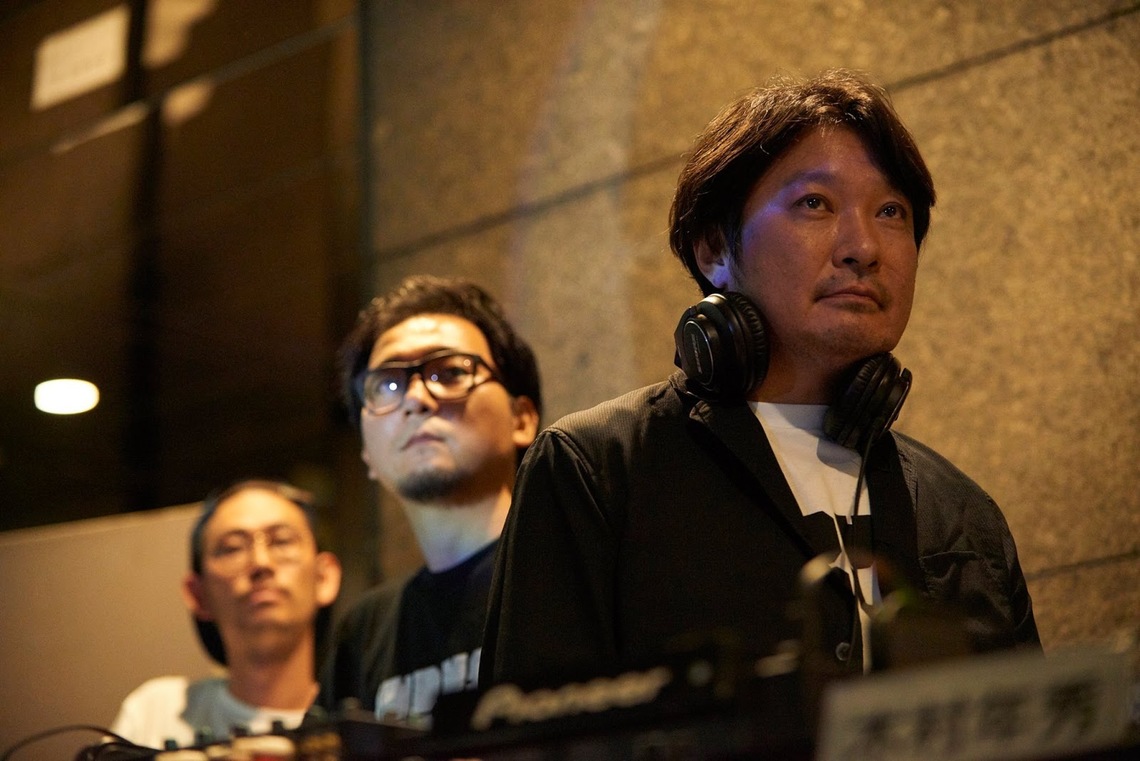
──The T-shirt you're wearing today looks cool, but do you have any product ideas?
Shimohama: We talked about creating a factory sound library for musicians, right? Since we have so much recorded material, we also want to create products that utilize it. Like a drum machine app.
Kimura: We have several ideas that seem promising, so we'll steadily work on them while bringing in people willing to collaborate. Basically, our approach is to keep drawing in people captivated by the scent of factories (laughs). For example, we plan to turn people like you, who came for an interview today, into fans of small town factories (laughs).
Shimohama: We're also working on new pieces in parallel, like Meiko Futaba, the factory that braids electrical wires, and Yuki Precision, which does precision cutting.
Kimura: The artist is still a secret, but Yuki Precision's music has turned out to be a strong, groovy minimal dub. For the new work at Meiko Futaba, a footwork/juke artist has created a track for the harness-braiding machine. This one has a finish that feels like a whole new development. Stay tuned (laughs).
Was this article helpful?
Newsletter registration is here
We select and publish important news every day
For inquiries about this article
Author

Shimohama Rintaro
Graphic Designer
Born in Tokyo in 1983. Graduated from Kanazawa College of Art. Graphic designer. After working at Dentsu Inc., became freelance in 2017. Engages in a wide range of design work including posters, newspaper advertisements, packaging, websites, smartphone apps, and exhibition spaces. Notable projects include the "Stray Font Discovery Project," which transforms street signs into fonts, and the planning and operation of "INDUSTRIAL JP," which transforms small factories into music labels. Additionally, actively pursues unique projects such as exhibitions at 21_21 DESIGN SIGHT and participation in regional art festivals.

Toshihide Kimura
Dentsu Inc.
Second CR Planning Bureau
Creative Director
Since joining the company, he has been involved in communication design for over 100 companies. At "INDUSTRIAL JP," he serves as Sound Director and manages the label. He was a juror for the "Music" category at the 2016 Cannes Entertainment Lions. His awards include the 2017 ADC Grand Prix, as well as Cannes Lions, New York ADC, New York Festivals, New York TDC, IBA, and the Good Design Award. Also known as DJ MOODMAN. Analog fetishist. Board game addict. Postcard lover. Member of Dentsu Inc. B Team.
